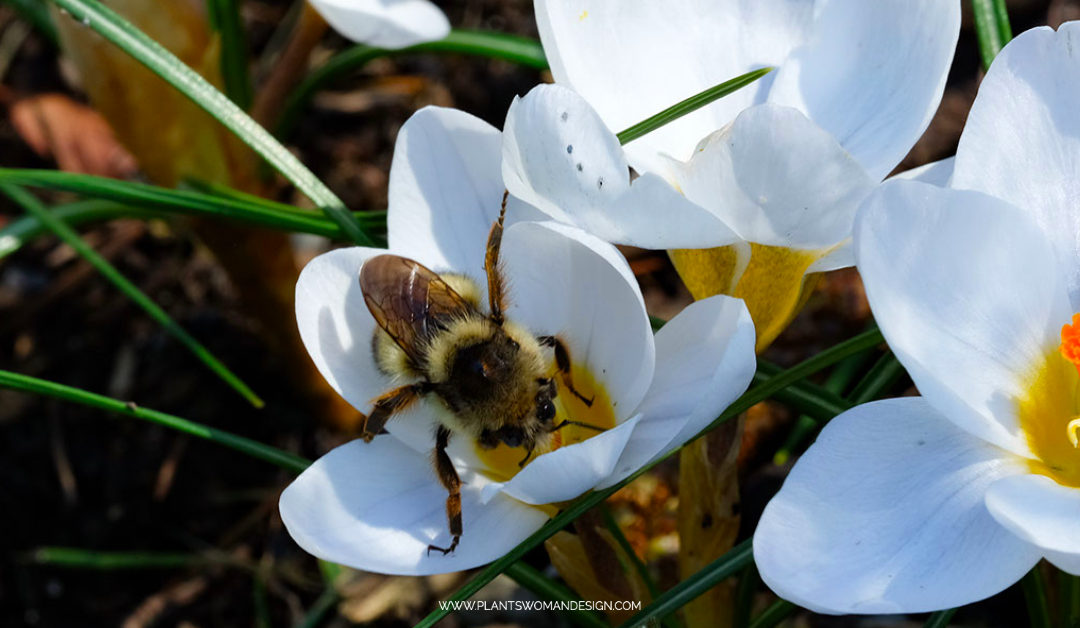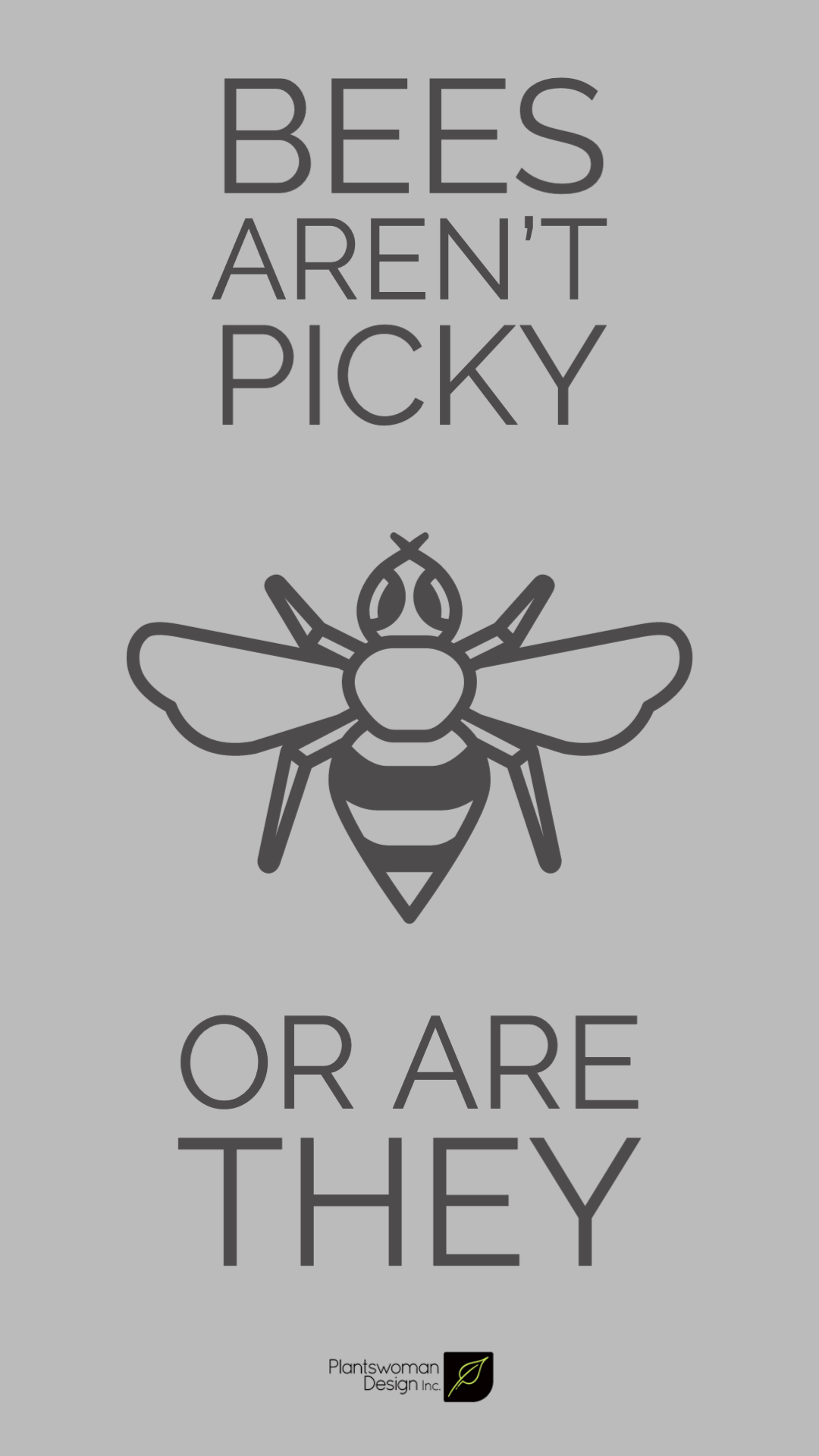
After the torrential rains of December and January, it is a wonder that anything is blooming. Thankfully there are great plants that survive the downpours and even flourish when everything else is a soggy mess. Along with the plants surviving, there are insects that winter over in the trees and they love to see the sunshine just like we do. As soon as the lukewarm sun starts hitting the trees the groggy bees stumble out looking for some food (kind of reminds me of teenagers). It is essential that we, as gardeners, provide early blooming plants for these very important members of our planet. Interestingly enough some bees are not at all particular about their food supply while others are. Our goal should be to provide both native food sources and ornamental garden food sources. Nature has a way of adapting to what is available but also searching for specifics.
I’m not a big native plant person. Growing up here I have seen the native plants in so many places, including open fields, forests, ditches, ponds, roadside edges, and yes, even parking lots. I probably should not go into my opinion of ferns and mahonia in parking lots, that’s another topic. I do, however, have native pollinating plants in my garden. The earliest blooming plants are fabulous Mahonias. The statuesque Mahonia x media ‘Charity’ (Zone 7-9, part shade, drought-tolerant), the mahonia repens (Zone 5-8, part sun, average moisture), and the newly popular Mahonia ‘Soft Caress’-Mahonia eurybracteata ’Soft Caress’ (Zone 4-7, Shade to part shade, acid soil). These three together are my favorite combination to attract bees that need native plants. The Mahonia Soft Caress blooms first in my garden from December through January. Charity starts after that and blooms until February. Then Mahonia Repens, with its soft, papery, red-purple leaves finishes the cycle in February and March. By the time these are finished there are many other native pollen sources blooming in the forest, and edges of the stream.
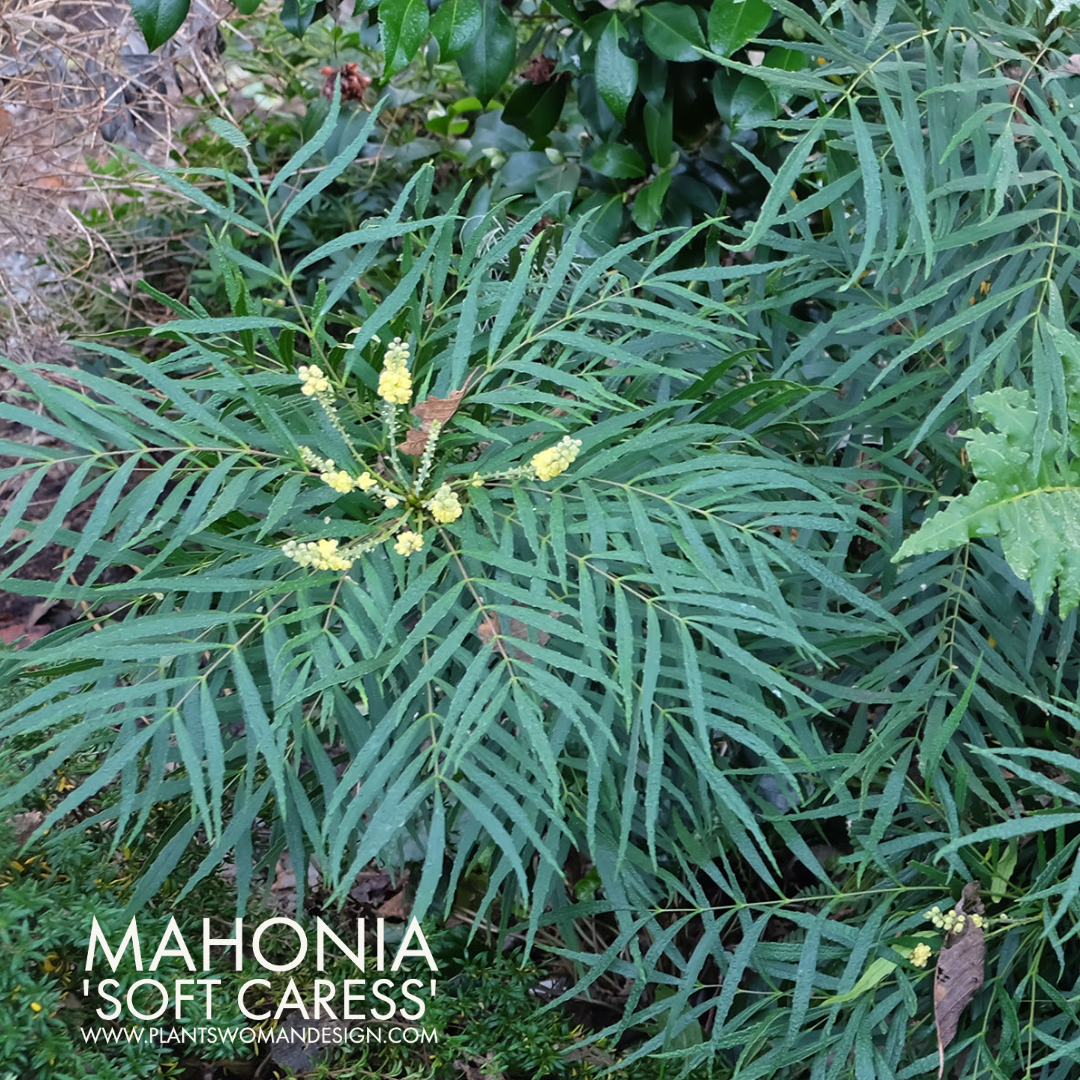
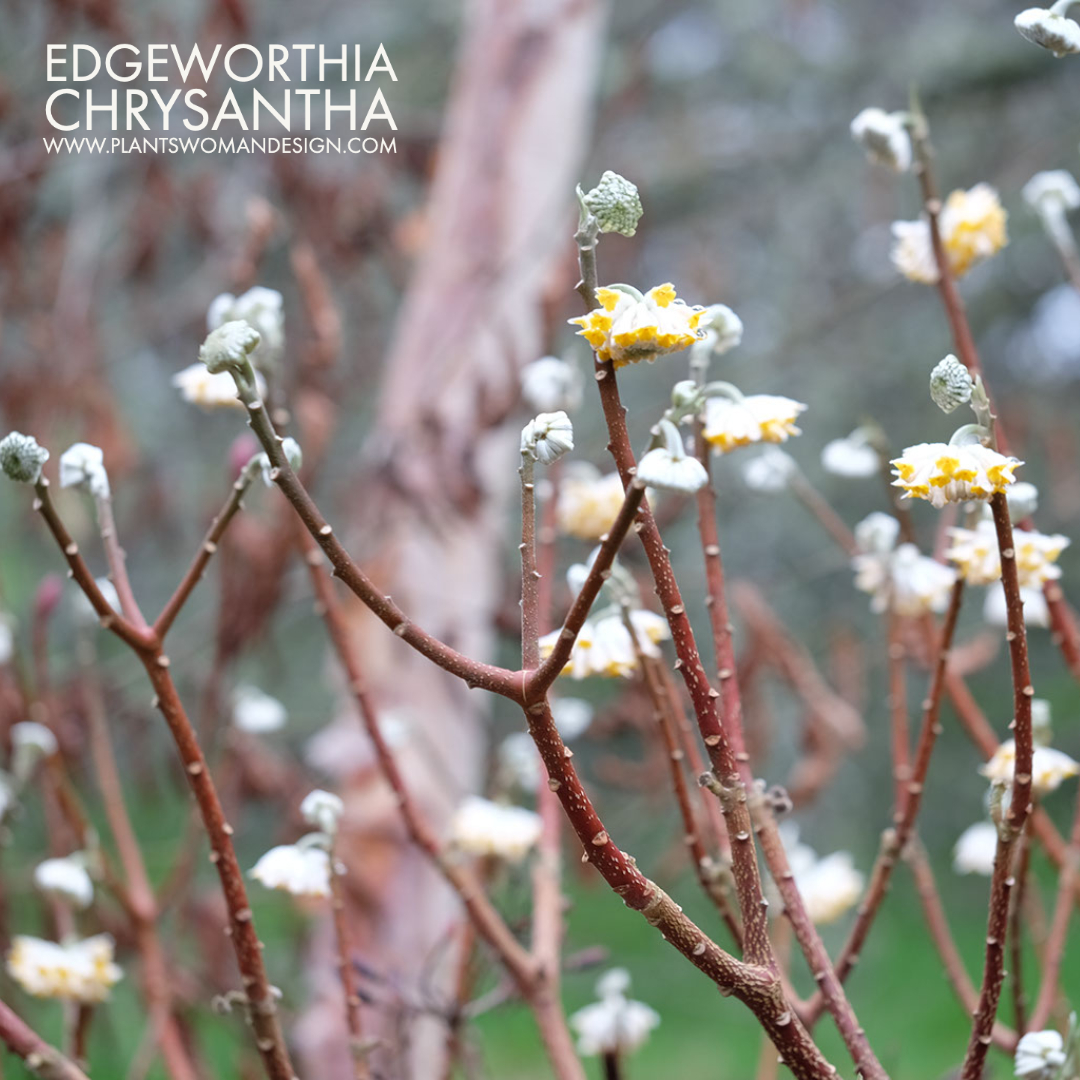
Non- native plants also start blooming in January and February. Many of these are also great for hummingbirds that have also not left the area. Edgeworthia chrysantha- Paper Bush ( Zone 5-9, filtered sun – part shade) has amazing hanging flower heads with yellow, waxy, tubular blooms and sweet scent that attract bees and hummingbirds in January and February. If you want to do a little more searching the rare, very cool, Edgeworthia akebono is striking with creamy outside and tangerine orange inside flowers and light scent.
A more common, yet still lovely, plants are the winter-blooming Camellias. Camellia sasanquas are blooming in gardens all around me. The best ones for pollinating are the single blossoms like Camellia sasanqua ‘Yuletide’ – Yuletide Camellia (Zone 7-10, part sun). The brilliant red blooms have a yellow center with prominent stamens. Sometimes blooming as early as December. Camellia sasanqua ‘Setsugekka’ is a clear, brilliant white that is a semi-double. The golden yellow center calls out to any passing bee.
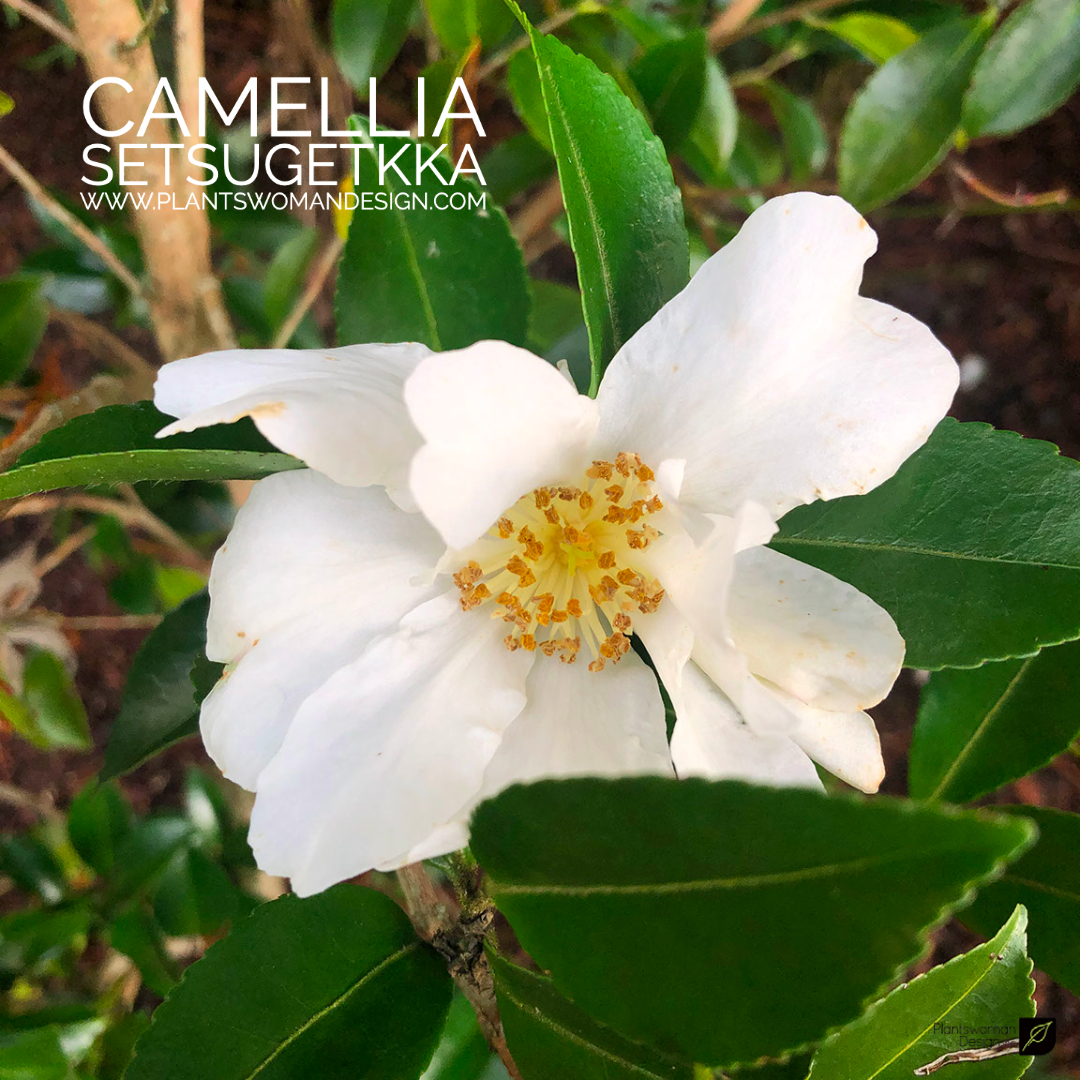
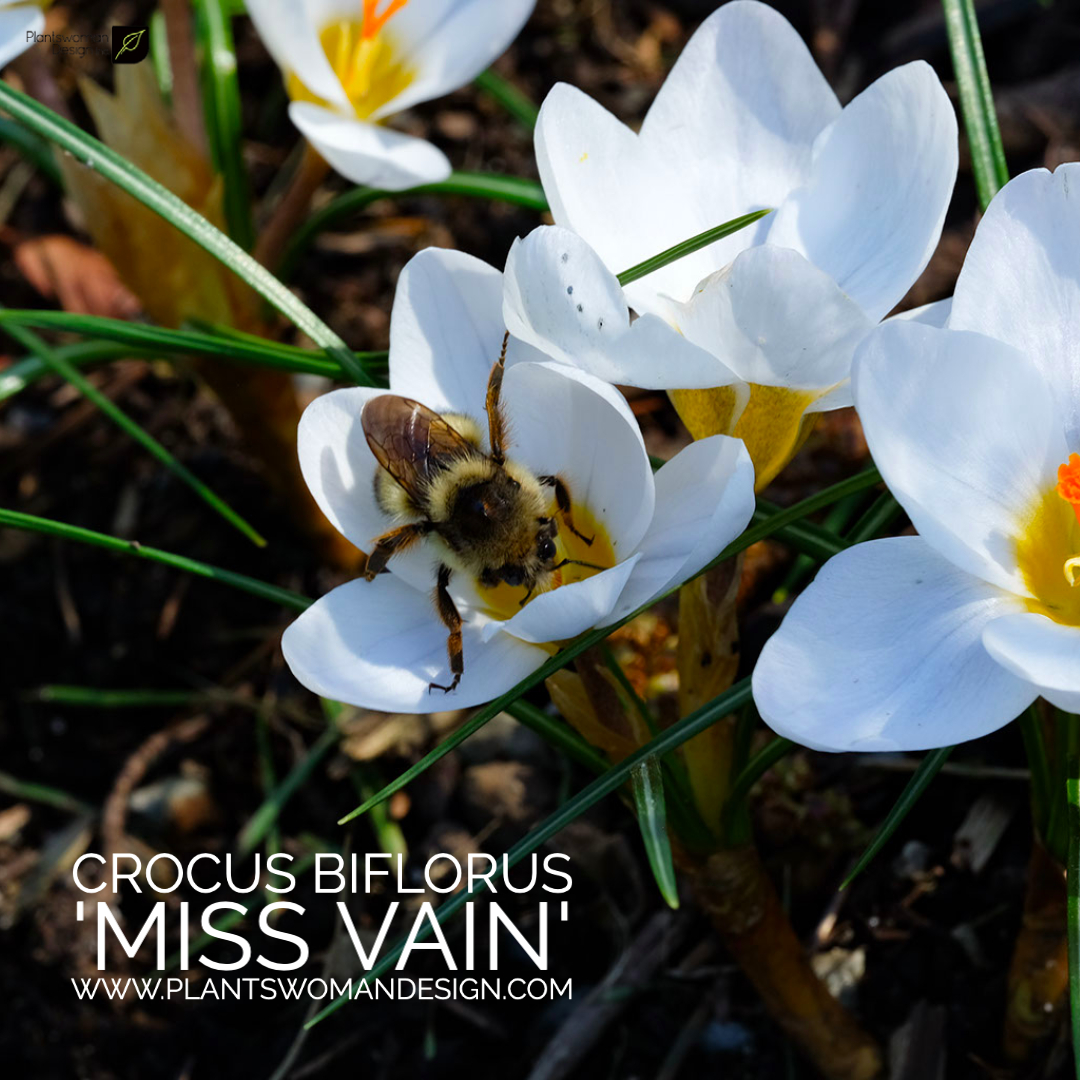
I’ll leave you with one more picture of a low growing crocus. Don’t forget these little puddles of sunshine in your garden, the bees will also enjoy them.

